Women's Safety Clothing Canada | Durable & Certified Workwear
Navigating the Landscape of Women's Safety Gear in Canada: Trends and Innovations
The demand for specialized personal protective equipment (PPE) has seen a significant evolution, particularly within the Canadian market, where regulatory compliance and worker well-being are paramount. Historically, safety gear was often designed with a generic male physique in mind, leading to ill-fitting, cumbersome, and potentially unsafe equipment for women. This oversight is rapidly being addressed by industry leaders who recognize the critical importance of ergonomically designed and gender-specific PPE. The shift is driven by a heightened awareness of workplace diversity, coupled with an increasing number of women entering traditionally male-dominated industries such as construction, mining, utilities, and manufacturing. Ensuring proper fit is not merely a comfort issue; it directly impacts dexterity, mobility, and overall protection, which can be the difference between safety and severe injury in hazardous environments. Modern women's safety clothing Canada is characterized by innovative material science, thoughtful design, and adherence to stringent national safety standards. Manufacturers are now focusing on creating clothing that not only meets the necessary protective thresholds but also offers enhanced comfort, breathability, and aesthetic appeal, promoting greater adoption and consistent use among female workers. This progressive approach is vital for fostering inclusive and safer workplaces across Canada, ensuring that every worker, regardless of gender, has access to optimal protection tailored to their specific needs and the demands of their role.
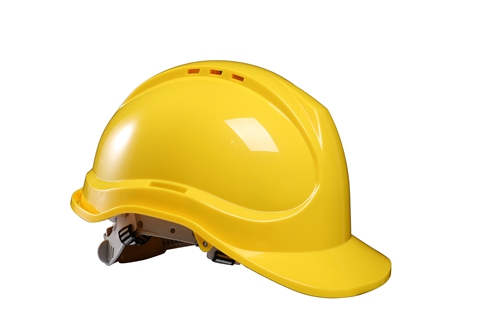
Key industry trends underscore a movement towards customization and smart safety solutions. Beyond basic protective functions, modern workwear integrates features like moisture-wicking properties for comfort, stretch fabrics for improved mobility, and reflective elements for enhanced visibility in low-light conditions. The focus extends to specialized protective capabilities, including flame resistance (FR), arc flash protection, and cut resistance, crucial for sectors like petrochemicals, electrical utilities, and heavy manufacturing. Furthermore, the market for women's safety clothing Canada is seeing an increase in sustainable and eco-friendly material options, reflecting a broader corporate responsibility trend. This includes the use of recycled materials or manufacturing processes that minimize environmental impact, without compromising on safety performance. The rise of e-commerce platforms has also made `women's safety clothing for sale online` more accessible, allowing businesses and individuals across Canada, including remote areas, to easily source specialized protective gear. This digital transformation simplifies procurement and broadens the selection available, ensuring that even niche requirements, such as those for specific regional climates or unique job hazards, can be met efficiently. Companies are now looking for comprehensive solutions from `workwear safety clothing factories` that can provide a full range of PPE, from head-to-toe, ensuring consistency in quality and branding.
Technical Specifications and Material Innovation in Safety Clothing
The technical efficacy of women's safety clothing Canada hinges critically on the selection of advanced materials and precision manufacturing processes. For garments designed to protect against environmental hazards, common materials include high-denier polyester blends for durability, often treated with durable water repellent (DWR) finishes for water resistance, and GORE-TEX or similar waterproof-breathable membranes for advanced weather protection. For high-visibility requirements, fluorescent fabrics (e.g., polyester or nylon in lime-green or orange) combined with retroreflective materials (e.g., 3M Scotchlite) are essential, meeting CSA Z96-15 standards for high-visibility safety apparel. Flame-resistant (FR) clothing, crucial in industries like oil and gas, often utilizes aramid fibers (like Nomex or Kevlar), treated cottons, or modacrylic blends. These materials are engineered to self-extinguish when exposed to flame, preventing continuous burning and minimizing burn injuries, and must comply with NFPA 2112 or CSA Z462 for arc flash protection. The manufacturing process involves sophisticated textile engineering, including precision cutting using CNC machinery to ensure accurate sizing and minimal material waste, industrial sewing techniques using robust thread to withstand harsh conditions, and often specialized seam-sealing for waterproof garments. Quality control at each stage, from fabric inspection to final garment assessment, is rigorous, ensuring compliance with ISO 9001 quality management systems.

Beyond general workwear, specific applications demand specialized material properties and manufacturing nuances. For instance, in areas requiring chemical splash protection, materials like PVC or specialized laminated fabrics are employed, offering impermeable barriers tested against specific chemical reagents. In cold weather environments, insulated layers featuring materials like Thinsulate or PrimaLoft are integrated, providing warmth without excessive bulk, allowing for greater mobility. The manufacturing lifecycle of these products also emphasizes durability, with typical service life for well-maintained safety garments ranging from 1 to 5 years, depending on the material, application, and care regimen. Strict adherence to international and national testing standards, such as those set by ANSI (American National Standards Institute) for general protective equipment or specific ISO standards for material performance, is non-negotiable. For head protection, such as the OEM printing personalized ABS safety helmet with CE certificate, the process involves injection molding of high-impact ABS plastic, followed by precision assembly of suspension systems, and often advanced printing techniques for customization. All components undergo rigorous testing for impact resistance, penetration resistance, and electrical insulation, adhering to standards like ANSI Z89.1 or CSA Z94.1, which ensures comprehensive protection for the wearer’s head in various industrial settings. The integration of advanced textiles with robust head protection forms a holistic safety solution, vital for preventing injuries in high-risk occupations across Canada.
Application Scenarios and Strategic Advantages of Specialized Safety Apparel
The diverse industrial landscape of Canada necessitates a wide array of specialized women's safety clothing Canada tailored for specific operational hazards. In the burgeoning renewable energy sector, including wind and solar farm construction, workers require flame-resistant and arc-rated apparel alongside high-visibility garments to ensure safety during electrical installations and work at heights. The demanding conditions of the mining and forestry industries call for robust, tear-resistant clothing with enhanced abrasion resistance, often incorporating integrated knee pads and reinforced stress points, designed to withstand rugged environments and provide protection against falling debris. For industries like petrochemicals and heavy manufacturing, where exposure to hazardous chemicals, extreme temperatures, or molten materials is a constant threat, specialized multi-hazard protective suits with anti-static properties and liquid-repellent finishes are paramount. Furthermore, in the evolving landscape of service industries, such as utility maintenance or `wright tree service safety clothing`, where teams operate outdoors in varying weather conditions, waterproof, breathable, and insulated high-visibility gear ensures both compliance and worker comfort. The strategic advantage of investing in gender-specific safety clothing extends beyond mere compliance; it demonstrably enhances worker morale, reduces instances of ill-fitting gear-related accidents, and ultimately contributes to higher productivity by enabling unrestricted movement and reducing discomfort over long shifts. This targeted approach to PPE deployment signifies a profound commitment to worker safety and an understanding of the nuanced requirements for a diverse workforce, leading to tangible improvements in overall workplace safety metrics and reduced lost-time injuries.
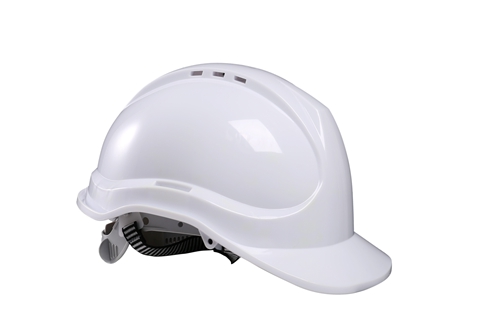
Industries like oil and gas, particularly within Western Canada, face unique challenges from extreme temperatures and the presence of flammable materials. Here, women's safety clothing Canada often includes multi-layered systems, featuring FR base layers, mid-layers, and outer shells designed to provide thermal protection and shield against flash fires. The water supply and drainage sector, encompassing municipal water treatment plants and pipeline maintenance, requires highly durable, waterproof, and breathable garments to protect against moisture and corrosive elements, ensuring that workers remain dry and comfortable during prolonged exposure to wet conditions. Moreover, the metallurgical industry, with its high heat and potential for molten metal splash, demands highly specialized protective wear capable of resisting extreme thermal loads and repelling molten droplets. The ergonomic design principles applied to these garments, such as articulated knees and elbows, adjustable waistbands, and tailored fits, are crucial for facilitating ease of movement during complex tasks, directly contributing to safety by preventing snags or restricted mobility. The adoption of advanced fabrics and design techniques in these scenarios not only ensures compliance with rigorous safety regulations but also provides measurable benefits in terms of enhanced worker performance and reduced fatigue. This holistic approach, integrating superior protection with ergonomic comfort, highlights the commitment of leading `workplace safety clothing sales` providers to comprehensive worker well-being, recognizing that effective PPE is an investment in human capital and operational efficiency.
Benchmarking Leading Manufacturers and Customization Solutions
When sourcing women's safety clothing Canada, discerning buyers often evaluate manufacturers based on their track record, product range, adherence to certifications, and capacity for customization. Leading providers distinguish themselves not only through the quality of their standard offerings but also through their ability to provide bespoke solutions that cater to unique industry requirements or corporate branding. For instance, reputable `workwear safety clothing factories` typically offer extensive catalogs of FR, high-visibility, and cold-weather gear, all rigorously tested to CSA standards. Comparative analysis reveals differences in fabric technologies, seam construction, and warranty periods. Some manufacturers excel in providing lightweight, breathable FR fabrics ideal for warmer climates or indoor work, while others specialize in heavy-duty, multi-layered systems for extreme cold or high-abrasion environments. Furthermore, a critical differentiator is the extent of their customization services, which can range from basic logo printing and embroidery to full design modifications for specific team needs, ensuring `ww concern for safety clothing` is not just protective but also unified in appearance. This personalization is particularly relevant for large organizations, ensuring brand consistency and reinforcing a professional image while prioritizing safety.
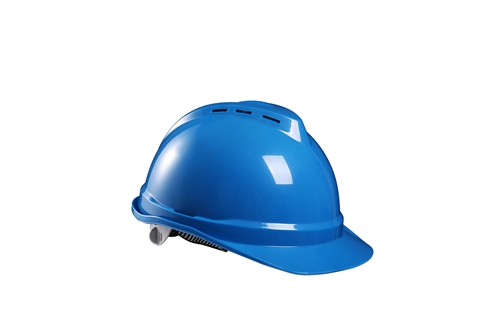
The process for securing customized women's safety clothing Canada typically involves an initial consultation to define specific requirements, including hazard assessment, required protective features (e.g., arc rating, chemical resistance), desired fit characteristics (e.g., anatomical sizing, adjustable features), and branding guidelines. This is often followed by material selection, prototyping, and rigorous testing of samples to ensure they meet both functional and regulatory compliance. Companies like ours, which offer specialized OEM services for products such as the OEM printing personalized ABS safety helmet with CE certificate, exemplify this customization capability. We leverage advanced manufacturing techniques, including precision injection molding and state-of-the-art printing, to deliver helmets that are not only certified for safety but also uniquely branded with company logos or specific hazard warnings. This level of customization extends to a broader range of safety products, including tailored cuts for `xps safety clothing` or branded options for `yakka safety clothing` lines, addressing the nuanced needs of various industries. Collaborative partnerships between clients and manufacturers ensure that the final safety apparel solutions are perfectly aligned with operational demands and organizational safety protocols. The ability to source comprehensive, tailored safety solutions from a single, reliable provider streamlines procurement processes and ensures consistency in quality and performance across all PPE components, from head protection to specialized garments.
Ensuring Trust and Authority: Certifications and Performance Data
For businesses investing in women's safety clothing Canada, the assurance of quality, reliability, and regulatory compliance is paramount. This trust is built on a foundation of rigorous testing, independent certifications, and transparent performance data. Key certifications to look for include CSA (Canadian Standards Association) standards, which are integral for safety products in Canada, such as CSA Z96 for high-visibility apparel, CSA Z462 for arc flash protection, and CSA Z94.1 for head protection. International standards like ISO 9001 for quality management systems demonstrate a manufacturer's commitment to consistent quality across all production processes, from raw material sourcing to final product inspection. CE marking signifies compliance with European health, safety, and environmental protection standards, often adopted globally as a benchmark for product integrity. Reputable manufacturers also provide detailed product data sheets outlining material composition, test results (e.g., tensile strength, tear resistance, flame propagation, waterproof ratings like hydrostatic head), and care instructions. Our company, with over two decades of dedicated service in the safety equipment industry, consistently adheres to these stringent standards, reflected in our CE certified products like the `OEM printing personalized ABS safety helmet with CE certificate`, underscoring our commitment to superior safety solutions.

To further enhance trustworthiness and provide clear decision-making insights for procuring women's safety clothing Canada, detailed performance data and comparison tables are invaluable. Below is a conceptual table summarizing key parameters for various types of women's safety clothing Canada, providing a quick reference for procurement teams. This table helps to demystify technical specifications and enables a direct comparison between different garment types based on their protective capabilities, typical lifespan, and applicable industry standards. This transparency in data and commitment to verifiable standards reinforces the authoritativeness of product offerings, building strong relationships with B2B clients who rely on precise, data-driven decisions for their safety procurement. Our robust internal testing protocols and third-party verifications ensure that every piece of PPE, including specialized items like those for `ww safety clothing` or specific requirements for `womens safety clothing nz`, meets or exceeds industry expectations, providing peace of mind to employers and end-users alike. Client testimonials and case studies, demonstrating successful implementation in various industrial settings, further substantiate the real-world performance and reliability of the safety solutions provided, fostering an environment of confidence and sustained partnership.
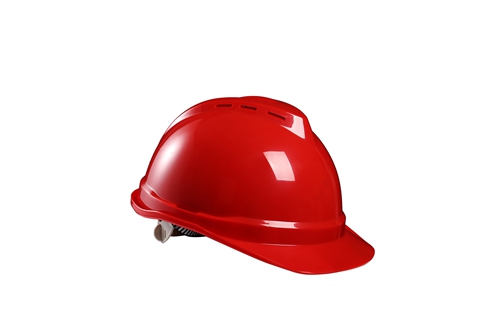
Key Parameters for Women's Safety Clothing in Canada
| Clothing Type | Primary Protection | Key Materials | Relevant Standards (Canada) | Typical Industries | Est. Lifespan (Years) |
|---|---|---|---|---|---|
| High-Visibility (HV) Vests/Jackets | Visibility in low light/traffic | Fluorescent polyester, retroreflective tape | CSA Z96-15 Class 2/3 | Construction, Road Work, Utilities, Transportation | 1-3 |
| Flame-Resistant (FR) Coveralls | Protection from flash fire/arc flash | Aramid blends (Nomex, Kevlar), FR cotton | NFPA 2112, CSA Z462, ASTM F1506 | 3-5 | |
| Waterproof/Breathable Rain Gear | Weather protection (rain, wind) | Gore-Tex, PVC, PU-coated polyester | ASTM F1891, CSA Z96 (if HV) | 2-4 | |
| Cut-Resistant Gloves/Sleeves | Protection from cuts/abrasions | HPPE, Kevlar, Steel/Glass fibers | ANSI/ISEA 105, EN 388 | 0.5-1 (for gloves, sleeves longer) | |
| Cold Weather Insulated Jackets | Thermal insulation in cold environments | Synthetic insulation (Thinsulate, PrimaLoft), durable outer shell | CSA Z96 (if HV), ASTM F2733 | 3-5 |

Process Overview: Manufacturing and Quality Assurance for Safety Gear
The robust manufacturing process for high-quality women's safety clothing Canada and complementary safety gear like helmets, involves several critical stages, each governed by stringent quality control protocols to ensure peak performance and compliance. It typically begins with Material Sourcing and Inspection, where raw fabrics (e.g., FR cotton, aramids, high-visibility polyester) and components (e.g., reflective tapes, zippers, buckles) are rigorously checked for compliance with specified technical datasheets, origin, and certifications (e.g., Oeko-Tex Standard 100 for harmful substances). This ensures that only premium-grade materials, vital for the protective integrity of the final product, proceed to subsequent stages. Following material approval, Precision Cutting takes place, often utilizing automated CNC (Computer Numerical Control) cutting machines to ensure accurate pattern replication and minimize material waste, particularly crucial for complex ergonomic designs that necessitate precision for optimal fit. This stage is paramount for creating components that will seamlessly integrate during assembly, a foundational step for consistent sizing in products ranging from `ww safety clothing` to specialized fire-resistant ensembles.
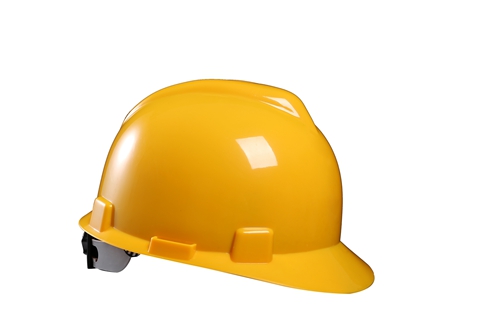
The next pivotal stage is Garment Assembly, where skilled technicians employ industrial sewing machines to join fabric panels. This requires specific stitching techniques – such as double-stitching for durability in high-stress areas or specific seam sealing for waterproof garments – tailored to the garment's intended protective function. For items like safety helmets, this stage involves sophisticated Injection Molding for the ABS shell, followed by Component Assembly including the suspension system, chin strap, and accessories, each part contributing to the overall integrity and protective capabilities of the helmet. Finishing and Embellishment then follows, encompassing the addition of closures (zippers, snaps), reflective elements, and any customization such as OEM printing or embroidery of corporate logos for clients seeking personalized gear. This is where features for `xps safety clothing` might be added, ensuring branding is precise and durable. Every product then undergoes Rigorous Quality Control and Testing. This includes visual inspections for defects, dimensional checks for sizing accuracy, and functional tests (e.g., zipper strength, snap retention). Crucially, samples from each batch are subjected to performance tests relevant to their certifications – for clothing, this might be flame propagation tests, hydrostatic head tests for waterproofness, or tear strength. For helmets, it includes impact attenuation and penetration resistance tests, aligning with standards like ANSI Z89.1 or CSA Z94.1. This comprehensive quality assurance cycle ensures that every piece of women's safety clothing Canada and accompanying PPE not only meets but often exceeds the demanding safety and performance requirements of the Canadian industrial sector.
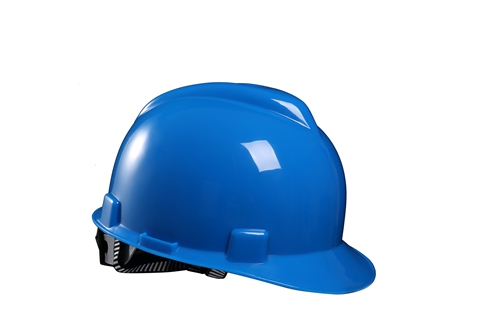
Beyond the manufacturing floor, effective `workplace safety clothing sales` extend to comprehensive Post-Production Support and supply chain management. This involves efficient warehousing, precise inventory control, and robust logistics to ensure timely delivery across Canada, from major urban centers to remote industrial sites. For specialized `yakka safety clothing` or large volume orders, a reliable supply chain is critical to meet project timelines. Furthermore, a commitment to Continuous Improvement is embedded in the process, driven by feedback from end-users, advancements in material science, and evolving regulatory landscapes. This iterative process ensures that products remain at the forefront of safety technology and continue to address the dynamic needs of industries. The integration of advanced CAD (Computer-Aided Design) for pattern making and CAM (Computer-Aided Manufacturing) for automated cutting significantly reduces human error and enhances production efficiency, ensuring consistent quality across batches. This meticulous, multi-stage approach to manufacturing and quality assurance is what differentiates top-tier suppliers of women's safety clothing Canada, providing clients with unparalleled confidence in the protective capabilities and longevity of their safety investments.
Customer Service Excellence: FAQ, Delivery, Warranty & Support
Exceptional customer service and transparent operational policies are crucial components of trustworthiness when procuring women's safety clothing Canada. We believe in providing comprehensive support throughout the entire customer journey, from initial inquiry to post-purchase care. Our commitment begins with a detailed FAQ section designed to address common questions regarding product specifications, sizing, care instructions, and certification requirements. For example, frequently asked questions often revolve around the differences between various FR fabrics, the appropriate CSA class for specific job roles, or how to correctly measure for optimal fit in `womens safety clothing nz` (even though the primary focus is Canada, the general principles of fit and protective classification apply). We aim to demystify complex technical information, empowering our clients to make informed decisions that prioritize their workers' safety. This proactive approach to information dissemination reduces lead times for inquiries and ensures that clients have immediate access to critical details, reflecting our dedication to open communication and expert guidance in the realm of B2B safety solutions.
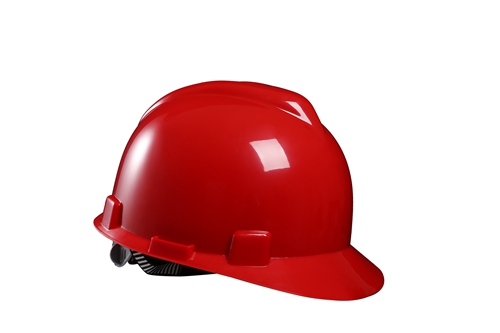
Understanding the critical nature of timely delivery for industrial operations, we maintain streamlined logistics and a robust supply chain. Our typical delivery cycle for in-stock women's safety clothing Canada and OEM helmets is 5-7 business days within major Canadian urban centers, extending to 10-14 business days for more remote locations or specialized custom orders, factoring in production time for `OEM printing personalized ABS safety helmet with CE certificate`. We provide clear communication on order status and tracking information, ensuring clients are always aware of their shipment's progress. This reliability in logistics is complemented by a comprehensive warranty program. All our safety garments and helmets come with a standard 1-year warranty against manufacturing defects in materials and workmanship, extending to 2-3 years for select premium products designed for extreme conditions. This warranty reflects our confidence in the durability and quality of our offerings and provides peace of mind for our clients. In the unlikely event of a product issue, our dedicated customer support team is readily available to assist with troubleshooting, replacements, or repairs, ensuring minimal downtime and maximum satisfaction.
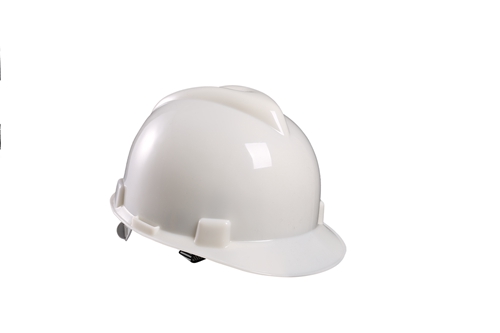
Our commitment to client satisfaction extends through our responsive after-sales support. Whether it's guiding clients through the proper maintenance of FR garments to maximize their lifespan, advising on the latest regulatory updates impacting `workplace safety clothing sales`, or providing technical assistance for specific product applications, our team of experts is equipped to provide solutions. We also offer bulk ordering support, including volume discounts and dedicated account managers for large enterprises, streamlining the procurement process and ensuring consistent pricing and service. For unique requirements, such as those for `wright tree service safety clothing` or other niche applications, our specialists work closely with clients to develop tailored solutions that combine optimal protection with specific operational needs. This holistic support system, from transparent FAQs and reliable delivery to robust warranties and dedicated post-sales assistance, solidifies our position as a trusted partner in providing high-quality women's safety clothing Canada and comprehensive safety solutions, ensuring that our clients' safety programs are both effective and efficient.
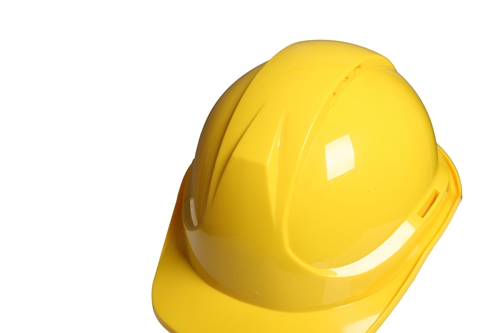
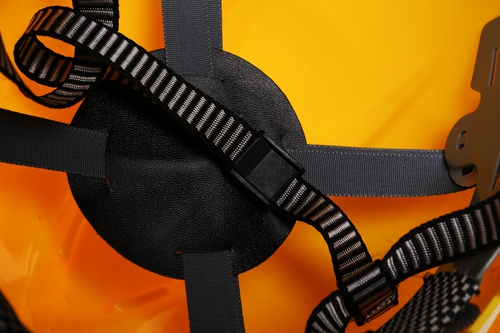
Authoritative References and Industry Standards
- Canadian Standards Association (CSA) Group. Z96-15, High-Visibility Safety Apparel.
- Canadian Standards Association (CSA) Group. Z94.1-15, Industrial Protective Headwear.
- National Fire Protection Association (NFPA). 2112, Standard on Flame-Resistant Garments for Protection of Industrial Personnel Against Flash Fire.
- National Fire Protection Association (NFPA). 70E, Standard for Electrical Safety in the Workplace.
- International Organization for Standardization (ISO). 9001:2015, Quality management systems — Requirements.
- American National Standards Institute (ANSI) / International Safety Equipment Association (ISEA). Z89.1-2014, Industrial Head Protection.
- American Society for Testing and Materials (ASTM). F1506-19, Standard Performance Specification for Flame Resistant and Arc Rated Textile Materials for Wearing Apparel for Use by Electrical Workers.
-
Women's Safety Clothing Canada | Hi-Vis & Durable Gear
NewsAug.27,2025
-
Durable Safety Helmet Hats: Ultimate Head Protection & Comfort
NewsAug.26,2025
-
HDPE Safety Helmet: Durable Head Protection for Work Sites
NewsAug.25,2025
-
Stylish Baseball Cap Safety Helmet | Discreet Head Protection
NewsAug.24,2025
-
Durable Waterproof Safety Clothing | Custom & High-Vis Protection
NewsAug.23,2025
-
Premium Reflective Safety Clothing | High-Vis Workwear
NewsAug.22,2025
